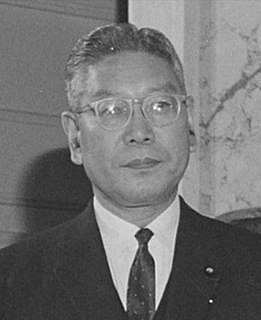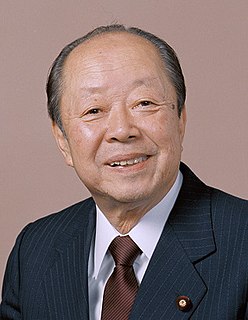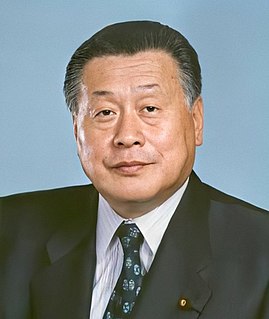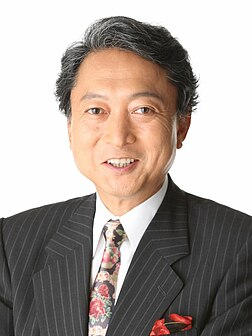 W
WGeneral elections were held for the first time in Japan on 1 July 1890. Voters elected 300 members of the House of Representatives of the Diet of Japan in what was the first example of a popularly elected national assembly in Asia.
 W
WGeneral elections were held in Japan on 15 February 1892 to elect the members of the House of Representatives of the Diet of Japan.
 W
WGeneral elections were held in Japan on 1 March 1894. The Jiyūtō remained the largest party, winning 120 of the 300 seats.
 W
WGeneral elections were held in Japan on 1 September 1894. The Jiyūtō remained the largest party, winning 107 of the 300 seats
 W
WGeneral elections were held in Japan in March 1898.
 W
WGeneral elections were held in Japan on 10 August 1898.
 W
WGeneral elections were held in Japan on 10 August 1902. The result was a victory for the Rikken Seiyūkai party, which won 191 of the 376 seats.
 W
WGeneral elections were held in Japan on 1 March 1903. The Rikken Seiyūkai party remained the largest in the House of Representatives, winning 175 of the 376 seats, but lost its majority.
 W
WGeneral elections were held in Japan on 1 March 1904. The Rikken Seiyūkai party remained the largest in the House of Representatives, winning 133 of the 379 seats.
 W
WGeneral elections were held in Japan on 15 May 1908. The result was a victory for the Rikken Seiyūkai party, which won 187 of the 379 seats.
 W
WGeneral elections were held in Japan on 15 May 1912. The result was a victory for the Rikken Seiyūkai party, which won 209 of the 381 seats.
 W
WGeneral elections were held in Japan on 25 March 1915. The Rikken Dōshikai party emerged as the largest party in the House of Representatives, winning 153 of the 381 seats.
 W
WGeneral elections were held in Japan on 20 April 1917. The Rikken Seiyūkai party led by Hara Takashi emerged as the largest party in the House of Representatives, winning 165 of the 381 seats.
 W
WGeneral elections were held in Japan on 10 May 1920. The result was a victory for the Rikken Seiyūkai party led by Hara Takashi, which won 278 of the 464 seats.
 W
WGeneral elections were held in Japan on 10 May 1924. No party won a majority of seats, resulting in Kenseikai, Rikken Seiyūkai and the Kakushin Club forming the country's first coalition government led by Katō Takaaki.
 W
WGeneral elections were held in Japan on 20 February 1928, the first after the introduction of universal male suffrage. The ruling Rikken Seiyūkai led by Prime Minister Tanaka Giichi won one more seat than the opposition Rikken Minseitō led by Hamaguchi Osachi, although Rikken Minseitō had received slightly more votes. The hung parliament led to the Tanaka government continuing in office.
 W
WGeneral elections were held in Japan on 20 February 1930. The Rikken Minseitō, which was led by Prime Minister Osachi Hamaguchi, won an overall majority in the House of Representatives. Voter turnout was 83.34%.
 W
WGeneral elections were held in Japan on 20 February 1932. They were the last elections before the May 15 Incident, which marked the temporary end of party politics in Japan. Rikken Seiyūkai won 301 of the 466 seats in the House of Representatives.
 W
WGeneral elections were held in Japan on 20 February 1936. Rikken Minseitō emerged as the largest party in the House of Representatives, winning 205 of the 466 seats. Following the elections, an attempted coup took place on 26 February.
 W
WGeneral elections were held in Japan on 31 March 1937. Rikken Minseitō emerged as the largest in Parliament, with 179 of the 466 seats. The election was a major victory for the Shakai Taishūtō, which became the third-largest party in the Diet. It was the first socialist party to do so in Japanese history. In contrast, the mildly pro-military Rikken Minseitō lost several seats and fascist groups such as Tōhōkai remained minor forces in the House. A month after the election, the Emperor replaced Hayashi with Fumimaro Konoe. Voter turnout was 73.3%.
 W
WGeneral elections were held in Japan on 30 April 1942 to elect members of the House of Representatives. They were the only elections held in Japan during the Pacific theater of World War II. By this time, the House of Representatives had lost all power to the military dictatorship, a process that started with the "Manchurian Incident" when the Imperial Army invaded Manchuria without approval from the cabinet in 1931. Since 1932 when Admiral Viscount Saitō Makoto was appointed prime minister with the first so-called "national unity cabinet", few members of the political parties in the House of Representatives had any significant role in government. Additionally, the military had at this point transformed Japan into a totalitarian one-party state, with only the Imperial Rule Assistance Association and Imperial Army-sponsored "independents" contesting the election.
 W
WGeneral elections were held in Japan on 10 April 1946, the first after World War II. Voters had one, two or three votes, depending on how many MPs were elected from their constituency. The result was a victory for the Liberal Party, which won 141 of the 468 seats. Voter turnout was 72.1 percent.
 W
WGeneral elections were held in Japan on 25 April 1947. The Japan Socialist Party won 143 of the 468 seats, making it the largest party in the House of Representatives following the election. Voter turnout was 68%. It was the last election technically held under the Meiji Constitution in preparation for the current Constitution of Japan which became effective several days later on 3 May 1947. The upper house of the Diet was also elected by the people under the new constitution, the first ordinary election of members of the House of Councillors had been held five days before.
 W
WGeneral elections were held in Japan on 23 January 1949. The result was a victory for the Democratic Liberal Party, which won 269 of the 466 seats. Voter turnout was 74.0%. It was the first election held following the enactment of the current Constitution of Japan.
 W
WGeneral elections were held in Japan on 1 October 1952. The result was a victory for the Liberal Party, which won 242 of the 466 seats. Voter turnout was 76.4%.
 W
WGeneral elections were held in Japan on 19 April 1953. The result saw the ruling Liberal Party win 199 of the 466 seats. Voter turnout was 74.2%.
 W
WGeneral elections were held in Japan on 27 February 1955. The result was a victory for the Japan Democratic Party, which won 185 of the 467 seats. Voter turnout was 75.8%.
 W
WGeneral elections were held in Japan on 22 May 1958. The result was a victory for the Liberal Democratic Party, which won 298 of the 467 seats. Voter turnout was 77.0%.
 W
WGeneral elections were held in Japan on 20 November 1960. The result was a victory for the Liberal Democratic Party, which won 296 of the 467 seats. Voter turnout was 73.5%, the lowest since the 1947 general elections.
 W
WGeneral elections were held in Japan on 21 November 1963. The result was a victory for the Liberal Democratic Party (LDP), which won 283 of the 467 seats. Voter turnout was 71.1%.
 W
WGeneral elections were held in Japan on 29 January 1967. The result was a victory for the Liberal Democratic Party, which won 277 of the 486 seats. Voter turnout was 73.99%.
 W
WGeneral elections were held in Japan on 27 December 1969. The result was a victory for the Liberal Democratic Party, which won 288 of the 486 seats. Voter turnout was 68.51%, the lowest since 1947. This was the first general election in Japanese history in which candidates were allowed limited use of television as a means for campaigning, something that had been formerly proscribed under Japan's strict election campaign laws. This election was also the first one in Japanese history to feature a mix of both single-member constituencies as well as regional proportional representation.
 W
WGeneral elections were held in Japan on 10 December 1972. The result was a victory for the Liberal Democratic Party, which won 271 of the 491 seats. Voter turnout was 71.76%.
 W
WGeneral elections were held in Japan on 5 December 1976. Voter turnout was 73.45%. This election was noted for seeing 124 newcomers win seats for the very first time, along with the defeat of some legacy candidates, signalling a generational shift in the Japanese political landscape. To date, the 1976 election has been the only post-war general election triggered by an expiration of the term of the House of Representatives; all other post-war elections have been instigated by a dissolution of the House by the Cabinet.
 W
WGeneral elections were held in Japan on 7 October 1979 to elect the 511 members of the House of Representatives. Prime Minister Ōhira Masayoshi's announcement that a consumption (sales) tax would be imposed was a hot-button issue in the run-up to the election. Facing widespread public disapproval, the prime minister abandoned the tax proposal. The prime minister's party, the Liberal Democratic Party (LDP), ended up losing one seat, while the Japan Communist Party experienced a surge in voter support and its best ever electoral result, which mostly came at the expense of the Japan Socialist Party and the LDP-breakaway New Liberal Club.
 W
WGeneral elections were held in Japan on 22 June 1980. They were the result of a vote of no confidence brought by the Japan Socialist Party (JSP) on 16 May regarding corruption and rises in public utility charges as reasons for the House of Representatives of Japan to withdraw its backing from the government.
 W
WGeneral elections were held in Japan on 18 December 1983 to elect the 511 members of the House of Representatives. The voter turnout was 67.94%, the lowest it had ever been in post-war history up to that point, and a low which would not be surpassed until ten years later.
 W
WGeneral elections were held in Japan on 6 July 1986 to elect the 512 members of the House of Representatives. This marks the last general election as of 2021 in which the LDP was able to obtain at least 300 seats in the House of Representatives, an event that only ever happened once before, in the 1960 election. This general election and 1960's are also tied for the highest number of seats ever obtained by the LDP in a general election, as both saw the LDP winning exactly 300 seats. However, the House of Representatives had fewer total seats in 1960, and so the popular vote for the LDP was actually stronger in 1960. Nonetheless, the 1986 general election also stands as the fourth strongest LDP showing in a general election in terms of the popular constituency votes.
 W
WGeneral elections were held in Japan on 18 February 1990 to elect the 512 members of the House of Representatives, the lower house of the National Diet.
 W
WGeneral elections were held in Japan on 18 July 1993 to elect the 511 members of the House of Representatives. The Liberal Democratic Party (LDP), which had been in power since 1955, lost their majority in the House. An eight-party coalition government was formed and headed by Morihiro Hosokawa, the leader of the Japan New Party (JNP). The election result was profoundly important to Japan's domestic and foreign affairs. It marked the first time since 1955 that the ruling coalition had been defeated, being replaced by a coalition of liberals, centrists and reformists. The change in government also marked a change in generational politics and political conduct; the election was widely seen as a backlash against corruption, pork-barrel spending and a inflated bureaucracy. Proposed electoral reforms also held much influence over the election. Eleven months after the election, the ruling coalition collapsed as multiple parties left the coalition.
 W
WGeneral elections were held in Japan on 20 October 1996. A coalition of the Liberal Democratic Party, New Party Sakigake and the Social Democratic Party, led by incumbent Prime Minister Ryutaro Hashimoto of the LDP won the most seats.
 W
WGeneral elections were held in Japan on 25 June 2000 to elect the 480 members of the House of Representatives.
 W
WGeneral elections were held in Japan on November 9, 2003. Incumbent Prime Minister Junichiro Koizumi of the Liberal Democrat Party won the election but with a reduced majority. The main opposition Democratic Party made considerable gains, winning 177 of the 480 seats in the House of Representatives, its largest share ever. Other traditional parties like the Communist Party and the Social Democrat Party lost a significant numbers of seats, making a two-party system a possibility in later Japanese politics.
 W
WGeneral elections were held in Japan on 11 September 2005 for all 480 seats of the House of Representatives of Japan, the lower house of the Diet of Japan, almost two years before the end of the term taken from the last election in 2003. Prime Minister Junichiro Koizumi called the election after bills to privatize Japan Post were voted down in the upper house, despite strong opposition within his own Liberal Democratic Party (Japan) (LDP).
 W
WGeneral elections were held in Japan on August 30, 2009 to elect the 480 members of the House of Representatives. The opposition Democratic Party of Japan (DPJ) defeated the ruling coalition in a sweeping victory, winning 221 of the 300 constituency seats and receiving 42.4% of the proportional block votes for another 87 seats, a total of 308 seats to only 119 for the LDP.
 W
WGeneral elections were held in Japan on 16 December 2012. Voters gave the Liberal Democratic Party a landslide victory, ejecting the Democratic Party from power after three years. It was the fourth worst defeat suffered by a ruling party in Japanese history.
 W
WGeneral elections were held in Japan on 14 December 2014. Voting took place in all Representatives constituencies of Japan including proportional blocks to elect the members of the House of Representatives, the lower house of the National Diet of Japan. As the cabinet resigns in the first post-election Diet session after a general House of Representatives election, the lower house election also led to a new election of the prime minister in the Diet, won by incumbent Shinzō Abe, and the appointment of a new cabinet. The voter turnout in this election remains the lowest in Japanese history.
 W
WGeneral elections were held in Japan on 22 October 2017. Voting took place in all Representatives constituencies of Japan – 289 single-member districts and eleven proportional blocks – in order to appoint all 465 members of the House of Representatives, the lower house of the then 707-member bicameral National Diet of Japan. Incumbent Prime Minister Shinzō Abe's governing coalition of the Liberal Democratic Party (LDP) and the Komeito party retained their seats in signs of what was perceived as weak opposition. The PM won his fourth term in office and held on to the two-thirds supermajority in order to implement policies on revising the war-renouncing Article 9 of the Japanese Constitution.
 W
WGeneral elections were held in Japan on 31 October 2021, as required by the constitution. Voting took place in all constituencies in order to elect members to the House of Representatives, the lower house of the National Diet. As the constitution requires the cabinet to resign in the first Diet session after a general election, the elections will also lead to a new election for Prime Minister in the Diet, and the appointment of a new cabinet, although ministers may be re-appointed. The election was the first general election of the Reiwa era.
 W
WAs of 2021, the House of Representatives of Japan is elected from a combination of multi-member districts and single-member districts, a method called Parallel voting. Currently, 176 members are elected from 11 multi-member districts by a party-list system of proportional representation (PR), and 289 members are elected from single-member districts, for a total of 465. 233 seats are therefore required for a majority. Each PR block consists of one or more prefectures, and each prefecture is divided into one or more single-member districts. In general, the block districts correspond loosely to the major regions of Japan, with some of the larger regions subdivided.
 W
WThe next Japanese general elections are scheduled on or before 31 October 2025, as required by the constitution. Voting will take place in all Representatives constituencies including proportional blocks, in order to appoint Members of Diet to seats in the House of Representatives, the lower house of the National Diet of Japan. As the cabinet has to resign after a general House of Representatives election in the first post-election Diet session, the lower house election will also lead to a new designation election of the Prime Minister in the Diet, and the appointment of a new cabinet.
 W
WThis articles presents detailed results of the Japanese 2017 general election of members of the House of Representatives. It lists all elected Representatives in the 289 single-member districts and the 11 regional proportional representation (PR) blocks. Subsequent by-elections and the PR block replacement candidates to be elected later without additional vote in cases of death, resignation or disqualification (kuriage-tōsen) are not listed.